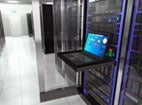Despite its widespread popularity in the enterprise, Flash storage is still one of the most misunderstood technologies in the data center.
Part of this is due to its incredible versatility – it comes in a wide range of configurations and can be deployed in numerous ways in support of multiple functions – but there is also the ongoing market volatility to deal with, which plagues the enterprise with an ever-shifting atmosphere of supplier arrangements, integration challenges and development roadmaps.
Even basic concepts like costs and benefits tend to break down when the conversation shifts to Flash. The major knock on Flash has always been that it is way too expensive for run-of-the-mill storage applications and therefore should be reserved for those that require high-speed performance. But as EMC’s Sean Horne notes, raw Flash costs have dropped dramatically in the past year and are quickly approaching parity with other forms of storage. As well, the Flash array is usually much more streamlined and flexible than its counterparts, providing higher utilization rates and less management overhead to bring down the total cost of storage.
This is hard to visualize when looking at the raw numbers, however. Dell, for instance, has broken new ground in the cost/GB of Flash storage with the SC Series array that can deliver upwards of 4TB for as little as $35,000. At first blush, this represents an eye-popping $8.75 per GB compared to hard disk array prices that can be as low as $3 per GB, but once you factor in costs like energy consumption, usable storage capacity (no short-stroking) and, depending on usage patterns, durability, the lifetime costs for Flash start to look more appealing.
Still, it cannot be denied that many Flash vendors are shifting their attention away from the saturated mobile and device markets to higher-end solutions for the enterprise precisely because they can charge a premium for essentially the same technology. HGST’s Western Digital unit, for instance, recently broadened its enterprise Flash portfolio with Skyera, a maker of ultra-dense all-Flash arrays for high-performance applications. The company uses NAND Flash directly from Toshiba and then adds its own controller and acceleration technology to create what many consider to be the best Flash arrays in the business.
Even top consumer-Flash providers like SanDisk are starting to see the enterprise light. The company is already warning investors about flatness in retail device markets even as enterprise sales are growing, accounting for about one-sixth of total revenue. But even here, market turmoil is a force to be reckoned with. Diablo Technologies, a key supplier of SanDisk’s enterprise-class ULLtraDIMM product line, which generally makes its way into server solutions from Lenovo, Huawei and others, was recently ordered to halt sales of its MCS Rush and Bolt chips in a patent dispute with rival vendor Netlist. SanDisk can simply cut a new deal with Netlist, of course, but even a few months’ disruption can seriously undermine revenues in a fast-moving market like Flash storage.
This more than anything is why the enterprise still needs to tread carefully when it comes to the deployment of Flash in the enterprise. Solid companies like Dell and EMC are reliable partners when it comes to infrastructure development, but underneath that veneer is a roiling stew of suppliers, designers, developers and lawyers who are trying to work out the rules surrounding the Flash market.
Sometimes, even when a technology is sound, the human factors guiding its development and manufacture are not.
Arthur Cole writes about infrastructure for IT Business Edge. Cole has been covering the high-tech media and computing industries for more than 20 years, having served as editor of TV Technology, Video Technology News, Internet News and Multimedia Weekly. His contributions have appeared in Communications Today and Enterprise Networking Planet and as web content for numerous high-tech clients like TwinStrata, Carpathia and NetMagic.




